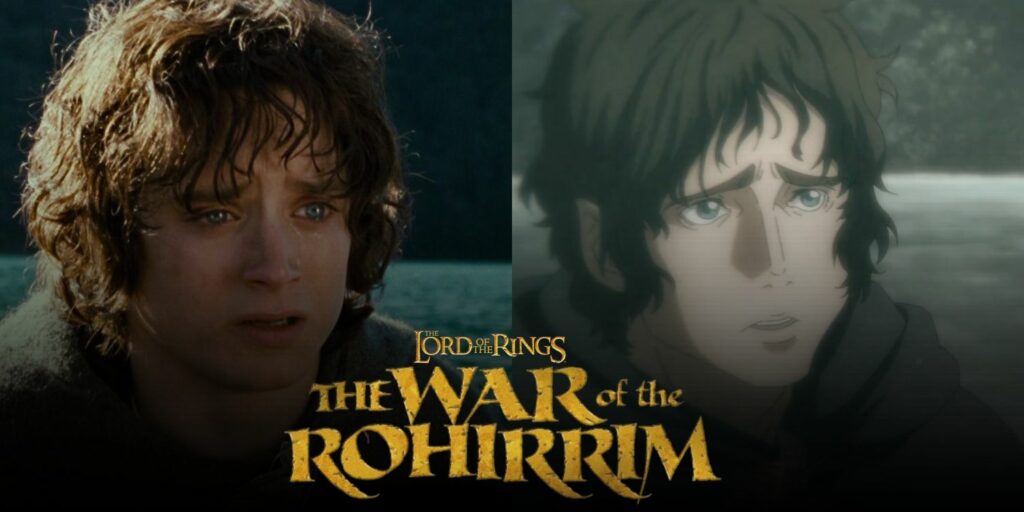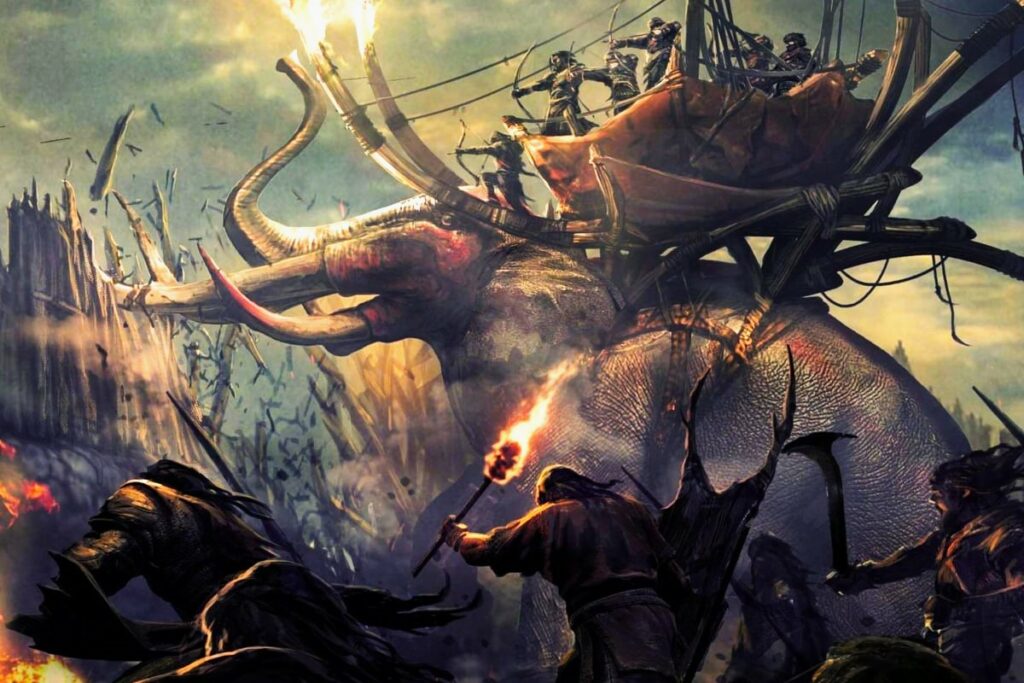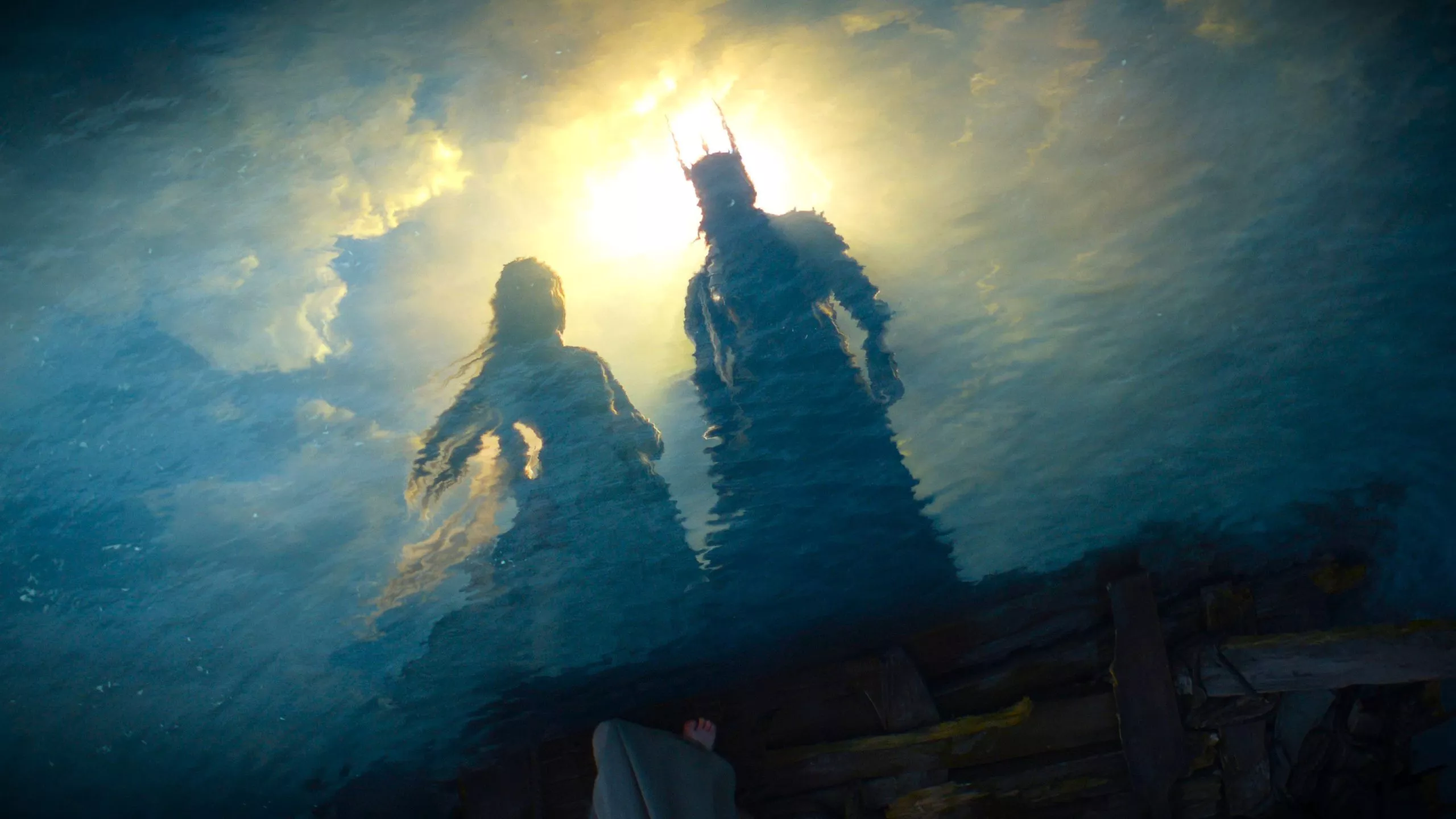In the 1950s, prior to the release of the iconic animated films and the renowned Peter Jackson trilogy, there existed ambitious plans for another Lord of the Rings movie. Regrettably, despite initial efforts, this particular project never came to fruition. Let’s delve into the reasons behind its demise.
After J.R.R. Tolkien’s passing in 1973, all English-language screen versions of The Hobbit and The Lord of the Rings were released, leaving us with a lingering curiosity about Tolkien’s perspective on these adaptations. However, history almost took a different course. In the late 1950s, Tolkien and his publishers seriously contemplated an animated film proposal, which progressed to the script stage before being ultimately abandoned.
In 1957, an American film agent named Forrest J. Ackerman approached Tolkien with the idea of an animated adaptation of The Lord of the Rings. Initially, Tolkien displayed a pragmatic and positive attitude towards the concept. He was presented with drawings and color photographs that aimed to convey the desired visual style for the animation. Additionally, he received a “Story Line,” a synopsis outlining the proposed plot of the film.
Tolkien expressed to his publisher, Rayner Unwin, that he would “welcome the idea of an animated motion picture” despite the potential risk of “vulgarization.” He believed that vulgarization would be a more tolerable outcome compared to the “sillification” achieved by a 1950s radio adaptation, which unfortunately is now lost. It’s important to note that this statement does not refer to the well-regarded 1980s radio drama featuring Ian Holm, a rendition that Tolkien might have appreciated due to its serious treatment of the story and faithful depiction of the world of Middle-earth.
Similar to his close friend and fellow English professor C.S. Lewis, Tolkien had a meticulous approach to describing things, carefully selecting his words to convey precise meanings. According to the Oxford English Dictionary, of which Tolkien was a staff member in 1919-1920, “vulgarization” refers to the process of making something common or familiar. On the other hand, “sillification,” although not a recognized word, clearly relates to “silly” and conveys a sense of foolishness or thoughtlessness. Thus, Tolkien was open to the idea of adapting his story to reach a wider audience but adamantly opposed any portrayal that would render it foolish or thoughtless.
Upon reviewing the initial synopsis of the proposed film, Tolkien expressed his thoughts to Unwin, stating that an “abridgement by selection” of the story could be effective. However, he believed that the current synopsis was a “compression” that resulted in “over-crowding and confusion.” Essentially, Tolkien felt that while trimming less significant sections of the book could work, trying to forcefully fit the entire story into an ill-suited format and length, as depicted in the current synopsis, was unwise. Additionally, he was concerned that the adaptation was transforming the story into more of a “fairy-story” rather than the epic myth he had written.
Nevertheless, as Tolkien approached retirement, he showed enthusiasm for the opportunity to generate additional income to support himself. He disclosed to his son Christopher that he and his other publisher, Stanley Unwin (Rayner’s father), had agreed upon a policy of “Art or Cash.” This policy involved negotiating highly profitable terms or granting the author complete veto power over objectionable alterations or features. While Tolkien held strong opinions about the adaptation of his stories for the screen, he was willing to compromise those sentiments in exchange for financial compensation.
However, there was one exception for Tolkien—Disney. He harbored a deep dislike for the animation studio. In a letter dating back to 1937, he expressed that American illustrators of The Hobbit could do “whatever they deemed suitable,” as long as anything related to or influenced by the Disney studios (for which he had a strong aversion) was strictly forbidden. This sentiment was primarily directed towards Mickey Mouse, even before Disney had released Snow White and the Seven Dwarfs. It appears that Tolkien’s negative opinion of Disney did not soften over the years.
Fortunately, Ackerman took a vastly different approach to the proposed imagery’s tone. Tolkien informed Christopher that the drawings resembled the style of Arthur Rackham rather than Disney. Arthur Rackham, an English artist renowned for his illustrations of fairies and fairy tales, depicted mythical creatures intricately and delicately, often intertwining them with nature, especially trees. It’s understandable why this style appealed to Tolkien, the creator of the Ents.
Unfortunately for Ackerman, things took a downturn after an initially promising start. In 1958, Tolkien corresponded with both Rayner Unwin and Ackerman regarding a film treatment penned by Morton Grady Zimmerman. This comprehensive examination of the proposed film included dialogue and various other elements, essentially resembling a full script. A photocopy of Zimmerman’s treatment can currently be found in the J.R.R. Tolkien Collection at Marquette University in Milwaukee.

Tolkien’s letter to Rayner in April 1958 clearly reveals his growing frustration with the project and the personal affront he felt due to certain changes made in the script, which deviated from his book. He was convinced that Zimmerman had hastily skimmed through “The Lord of the Rings” and constructed the synopsis based on a muddled recollection. The treatment contained fundamental errors, such as misspelling Boromir’s name as Borimor, and perplexing alterations, like transforming the wizard Radagast into an eagle. Tolkien expressed his dissatisfaction with Zimmerman’s “extreme silliness and incompetence” and his complete disregard for the integrity of the original work. Nevertheless, considering his impending retirement and financial needs, Tolkien reluctantly continued to engage with the project.
However, by June 1958, Tolkien had thoroughly reviewed Zimmerman’s treatment and found it severely lacking. He sent Ackerman a copy of the script, accompanied by his own annotations and comments. A substantial collection of excerpts, along with Tolkien’s letter to Ackerman, was published in “The Letters of J.R.R. Tolkien.” Here are a few noteworthy highlights:
The film script overly relied on the Eagles, which Tolkien considered a “dangerous ‘machine'” that should be used sparingly and within the absolute limit of their credibility and usefulness.
One troubling change Zimmerman made was having the Bree landlord ask the hobbits to “register” and providing them with numbered room keys. Tolkien was appalled by this alteration, explaining that there were no police or government in Bree. He added, “Neither do I make him number his rooms. If additional details are to be included in an already crowded narrative, they should at least align with the described world.” Later, he expressed significant dissatisfaction with the suggestion that lembas bread could be scientifically explained as a “food concentrate.” Tolkien emphasized that in the book, lembas had a nearly religious significance and that science fiction explanations did not fit within the scope of his world-building.
Zimmerman’s description of Orcs as having feathers and beaks greatly contradicted Tolkien’s firm stance that Orcs were twisted versions of the human form of Elves and Men, not bird-like creatures.
As Tolkien continued writing, his tone grew increasingly irate. When addressing the Balrog, he firmly asserted that it should not produce any vocal sounds and certainly should not “laugh or sneer.” He stated, “Z may believe he knows more about Balrogs than I do, but he cannot expect me to agree with him.”
Tolkien found himself annoyed by the depiction of delicate spires and tiny minarets resembling fairies on a “castle” in Lothlórien. However, he was even more upset by the omission of the temptation of Galadriel, a pivotal moment in Lothlórien when Galadriel considers Frodo’s offer to take the One Ring. While Tolkien was open to removing less important elements from the story, he firmly believed that this particular scene carried significant moral weight. He lamented, “Practically everything with moral import has vanished from the synopsis.”
Tolkien had significant concerns about Zimmerman’s treatment of Rohan and the Rohirrim, based on historical accuracy. He argued that during that era, kings like Théoden did not have private bedrooms, likely referring to the early medieval period in Northern Europe, which served as inspiration for Rohan. Additionally, he strongly objected to the idea of glass windows that could be thrown open, emphasizing his point with two exclamation marks and remarking, “We might be in a hotel.”
Overall, Tolkien felt that Zimmerman displayed a lack of appreciation for the essence of his work, treating the story carelessly and recklessly. He believed that the most crucial part of the story, the journey of the Ringbearers (specifically Sam and Frodo), had been fundamentally distorted, stating that it had been “murdered,” using strong language. This critique likely referred to changes made between the original production notes and the treatment Tolkien reviewed in 1958.

The original production notes closely followed the story’s ending. However, in Zimmerman’s treatment, Sam abandoned Frodo to Shelob, even after realizing that Frodo was still alive, driven by a sense of duty to Middle-earth. Sam then took the Ring to Mount Doom himself—an action Tolkien noted in the margin as being the opposite of what occurs in the book. When Sam reached the fiery depths and was about to destroy the Ring, he was attacked by Frodo, who, in turn, was attacked by Gollum. This likely explains why Tolkien described Part III of Zimmerman’s treatment as “totally unacceptable to me, as a whole and in detail.”
As for the animated films from the 1970s and 1980s, as well as Peter Jackson’s films, it is likely that Tolkien would have found the Rankin/Bass films to be excessively “Disneyfied,” but he might have appreciated Ralph Bakshi’s more serious approach to the story. The Ackerman project, which was initially planned to combine live action, animation, and miniatures, may have also appealed to Tolkien due to Bakshi’s blending of animation and live action.
Interestingly, some elements that Tolkien disliked in the Zimmerman treatment eventually made their way into the Jackson movies. For instance, Aragorn draws a sword in Bree instead of carrying the Sword That Was Broken, the Black Riders screech rather than approaching silently, and additional fight scenes, including one at Weathertop, were added by Jackson, all of which were subjects of complaint in the Zimmerman treatment. Tolkien even pointed out to Ackerman that the battle between the Rohirrim and the Orcs in The Two Towers should be referred to as “the defense of the Hornburg,” not “Helm’s Deep,” as Helm’s Deep is actually the ravine behind the Hornburg and is not depicted. It’s fortunate that Tolkien never saw those “I Survived Helm’s Deep” t-shirts that Jackson gave to his production crew after the challenging shoot.
On the other hand, considering Tolkien’s preference for abridgement rather than compression, it is quite likely that he would have been less bothered by the exclusion of Tom Bombadil than some of his fans are. Zimmerman’s script actually included Bombadil and his partner Goldberry, with Goldberry being introduced as a glimpse of skin through a waterfall. Tolkien commented that “she had far better disappear than make a meaningless appearance.”
Ironically, Tolkien might have been more accepting of the theatrical version of Jackson’s The Return of the King, in which Saruman is left alive and trapped in Orthanc, never to be seen again. In Zimmerman’s treatment, Saruman’s death was altered so that he took his own life. Tolkien strongly disagreed with this change, stating that Saruman would never have committed suicide. He believed that Gandalf should have left Saruman in Orthanc, proclaiming, “Since you will not come out and aid us, here in Orthanc you shall stay till you rot, Saruman. Let the Ents look to it!”
Interestingly, the theatrical cut of The Return of the King includes a similar scene where Gandalf says, “And there [locked in his tower] Saruman must remain, under your guard, Treebeard.” This parallel to Tolkien’s vision would have likely made him view these changes in a more positive light. In comparison, Zimmerman’s treatment failed to meet Tolkien’s expectations.
Most of the quotations from Tolkien are sourced from The Letters of JRR Tolkien, edited by Humphrey Carpenter and Christopher Tolkien, available in paperback from HarperCollins. One quote is taken from Janet Croft’s chapter on film scripts of The Lord of the Rings in Fantasy Fiction into Film: Essays.

